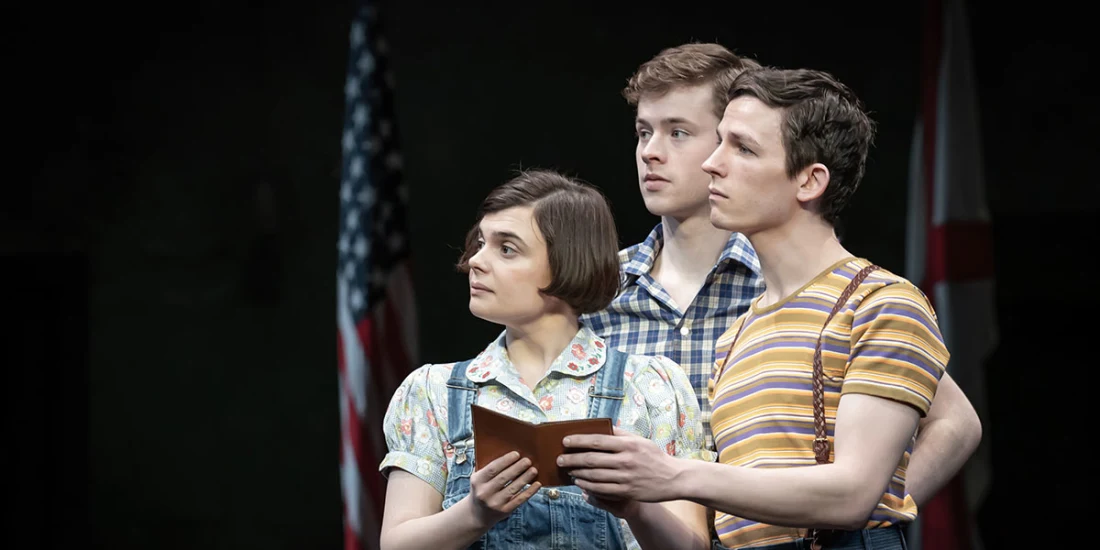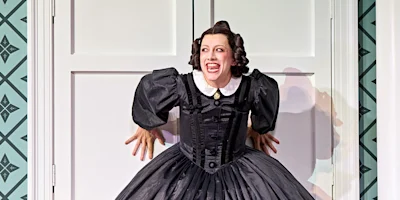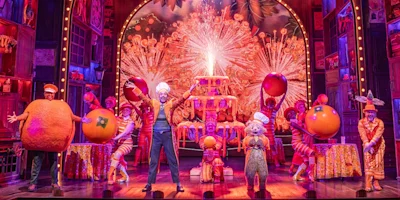
How Harper Lee's 'To Kill a Mockingbird' transformed from page to stage
If you went to middle or high school, you probably read To Kill a Mockingbird. Harper Lee’s 1960 novel is one of the landmark works of classic American literature, and it stands the test of time in school curricula and public discourse more than 60 years later — not to mention on stage.
Aaron Sorkin’s play adaptation of To Kill a Mockingbird premiered to acclaim on Broadway in 2018 and opened in the West End in 2022. Lee’s story, inspired by true events, remains timelier than ever with its examination of American race relations.
Read on for To Kill a Mockingbird trivia you may have missed (or forgotten) from school, and find out what Sorkin changed as he imagined Mockingbird for the stage.
Book To Kill a Mockingbird tickets on London Theatre.
What is To Kill a Mockingbird about?
Six-year-old Jean Louise “Scout” Finch narrates the novel, and Scout lives in the fictional town of Maycomb, Alabama with her brother Jem and her father Atticus. Atticus, a lawyer, is tasked with defending a young Black man named Tom Robinson, who is accused of raping a white woman, Mayella Ewell. Racist townspeople viciously condemn Tom but also target Atticus (as well as Scout and Jem) for defending him, even as it becomes clear during the trial that Mayella is lying about Tom’s crime. Separately, Scout is intrigued by her reclusive neighbor Boo Radley, who, though they’ve never spoken, comes to her rescue at an unlikely moment.
To Kill a Mockingbird is inspired by Lee’s own childhood
You can see some of the autobiographical details from Lee’s own childhood both in the novel and in the play. Most notably, Lee’s father was an attorney who undertook a case similar to Tom Robinson’s when Lee was 10.
The character of Scout’s friend Dill was inspired by Lee’s own childhood friend, fellow author Truman Capote. According to Capote, the recluse Boo Radley resembles a man the two knew as children who, like Boo, left objects in the trees for the children to take while remaining unseen.
Aaron Sorkin was not the first person to adapt To Kill a Mockingbird
Nearly 30 years before Sorkin, in 1990, writer Christopher Sergel first staged his own To Kill a Mockingbird play in Monroeville, Alabama — Lee’s hometown. The show has been produced every single year since, with locals making up the cast.
The production starts outside the county courthouse and moves inside when the story’s courtroom scene begins, creating an immersive experience for the community. (Famously, Lee “abhors anything that trades on the book’s fame,” so she never attended a Mockingbird performance in Monroeville or otherwise during her lifetime.)
Beyond Monroeville, Sergel’s script has been performed around the world for years and was the sole adaptation available to license prior to 2016. Enter: Aaron Sorkin. That year, the mastermind behind shows like The West Wing and movies like The Social Network announced that he was going to re-adapt To Kill a Mockingbird for Broadway.
Sorkin’s To Kill a Mockingbird opened on Broadway in 2018 at the Shubert Theatre. Emmy Award winner Jeff Daniels led the cast as Atticus Finch, with Celia Keenan-Bolger as the show’s narrator Scout. The innovative production received rave reviews, sold-out crowds, and nine Tony Award nominations. Find out more about Aaron Sorkin and To Kill a Mockingbird.
Sorkin changed the structure of the story for the stage
Sorkin kept Lee’s plot intact, but he changed the structure. Rather than waiting to introduce the courtroom scene halfway through as the book does, Sorkin’s adaptation introduces the trial right at the beginning. He weaves it into the narration throughout, and Scout, Jem, and Dill’s childhood shenanigans that make up the first half of the book are peppered in between.
With this new structure, To Kill a Mockingbird becomes a memory play, in which Scout is recalling the trial and other memories in retrospect, processing all that they’ve taught her about her intolerant hometown.
Adult actors play the kids
On Broadway and in the West End, the kids are played by adults. (It works, we promise!) The choice emphasizes the kids’ maturity and quick loss of innocence as they learn about racism and crime. And it’s not far off from Lee’s writing — Scout is already very mature and well-spoken in the novel, so much so that book critics questioned her believability as a character at first. She’s practically 6-going-on-26.
And Sorkin, a famously complex writer, doesn’t change that about Scout for the play. Jeff Daniels once quipped, “You’ve got Aaron Sorkin dialogue. Find me a nine-year-old that can do that. They don’t exist.” The adults that play the kids still bring a youthful energy to the characters. Keenan-Bolger, for one, has played kids in shows like The 25th Annual Putnam County Spelling Bee and Peter and the Starcatcher, so she knows how to do a part like Scout well. She did win a Tony for it, after all!
There’s music in To Kill a Mockingbird
There’s a soundtrack to the story, brought to ears by an ever-present guitarist and organist that the audience can see on stage. That kind of setup is usually seen in musicals, making To Kill a Mockingbird stand out among plays.
The music was composed by Adam Guettel, who’s best known for The Light in the Piazza (which Keenan-Bolger has also starred in!). He wrote most of the score in the rehearsal room with director Bartlett Sher and the actors, which let him use their performances as inspiration for the music and time it to perfectly fit whatever mood or transition is happening at any moment.
Black characters get more agency in the play
Another update of Sorkin’s is that the audience gets time with characters besides Scout separate from her narration, most notably Atticus and the Black characters. There are moments with Atticus and Calpurnia and Atticus and Tom that Scout talks about in the book, but are acted out by the characters themselves on stage.
The housemaid Calpurnia, for example, is the one to remind Atticus that his neighbors, the townspeople he believes to be inherently good, are showing themselves to be the opposite over and over again. And we see Tom react in real time to the proceedings of his own trial and the jury that’s stacked against him from the start.
Sorkin’s To Kill a Mockingbird doesn’t change or downplay the heavy themes of racism from the novel, but the play adds to who gets to tell that story — not just Scout or Atticus, but the Black people most directly affected.
Originally published on









